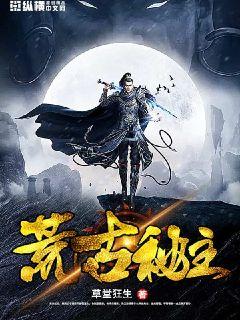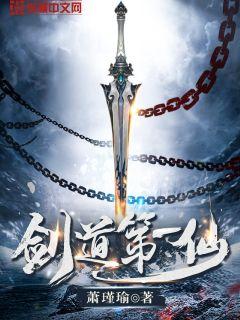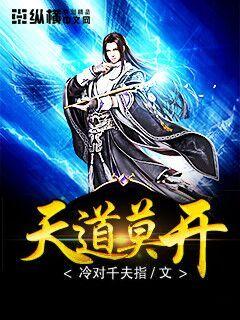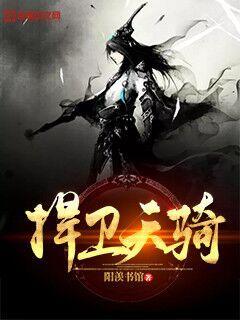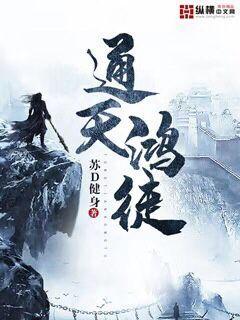
Certainly! Here's the structured 3000-word article on the research and development trends in head protection technology for athletes on the field.
**Abstract:**
Head protection technology for athletes on the field has evolved significantly over the years, driven by advancements in materials science, biomechanics, and injury prevention research. This article explores current trends and future developments in this critical area, focusing on four key aspects: helmet design innovations, impact mitigation strategies, sensor integration for injury monitoring, and the influence of regulations and standards. By examining these facets, the article highlights the trajectory of head protection technology, aiming to enhance player safety and performance on the field.
---
**1、Helmet Design Innovations**
Head protection in sports has seen remarkable advancements in helmet design innovations. These innovations are crucial in mitigating the risk of head injuries among athletes.
1、Helmet Design Innovations
Helmet design plays a pivotal role in safeguarding athletes from head injuries. Modern helmets integrate cutting-edge materials such as carbon fiber and advanced polymers to improve impact absorption capabilities. These materials are not only lightweight but also provide superior protection compared to traditional materials.
Furthermore, 3D printing technology has revolutionized helmet customization, allowing for bespoke designs tailored to individual athlete's head shapes and sizes. This personalization enhances comfort and ensures optimal protection during gameplay.
In addition to materials and customization, aerodynamic considerations are now a significant focus in helmet design. Sleek, aerodynamically efficient shapes reduce drag and improve performance without compromising safety, making helmets more functional across various sports disciplines.
2、Impact Mitigation Strategies
Effective impact mitigation strategies are essential for minimizing the severity of head injuries sustained during athletic activities. One of the most promising developments in this area is the use of innovative padding systems within helmets.
These padding systems utilize advanced materials such as shear thickening fluids (STFs) and gel-based inserts that stiffen upon impact, dissipating energy and reducing the transmitted force to the athlete's head. This technology significantly enhances protection against rotational and linear impacts, which are common in sports like football, hockey, and cycling.
Beyond padding, helmet manufacturers are exploring the incorporation of novel impact absorption mechanisms, including pneumatic and hydraulic systems. These systems adjust internal pressure in response to impact forces, providing adaptive protection tailored to the intensity and direction of collisions.
Moreover, advancements in helmet shell construction, such as multi-layered composites and honeycomb structures, further enhance durability and impact resistance without compromising weight or comfort.
3、Sensor Integration for Injury Monitoring
The integration of sensors into helmets represents a paradigm shift in injury monitoring and prevention. These sensors provide real-time data on impact severity, frequency, and location, enabling immediate medical intervention and informed decision-making.
Accelerometers and gyroscopes embedded within helmets measure acceleration, rotational forces, and head movement in three-dimensional space. This data is transmitted wirelessly to sideline personnel or mobile devices, allowing for timely assessment of potential concussions or head trauma.
Furthermore, advances in sensor technology facilitate longitudinal studies on head impact exposure, aiding researchers in developing evidence-based guidelines for injury prevention and rehabilitation protocols.
Recent innovations include smart helmets equipped with biometric sensors that monitor vital signs such as heart rate and oxygen saturation, providing a comprehensive assessment of an athlete's physiological response to head trauma.
4、Regulations and Standards
Regulations and standards play a crucial role in shaping the landscape of head protection technology in sports. Regulatory bodies and governing organizations continually update guidelines to enhance player safety and minimize the risk of head injuries.
Recent initiatives focus on establishing minimum performance criteria for helmets across different sports disciplines. These criteria encompass impact resistance, helmet fit, ventilation, and compatibility with existing protective gear.
Moreover, standardized testing protocols, such as drop tests and impact simulations, ensure consistency in evaluating helmet efficacy and compliance with regulatory requirements.
Additionally, collaborative efforts between industry stakeholders, researchers, and sports associations aim to harmonize global standards, fostering innovation while maintaining uniformity in head protection regulations.
**Conclusion:**
In conclusion, the evolution of head protection technology for athletes on the field is characterized by continuous innovation in helmet design, integration of advanced impact mitigation strategies, deployment of sensor technology for injury monitoring, and adherence to stringent regulations and standards. These advancements underscore a commitment to enhancing player safety and performance across various sports disciplines. As research and development efforts progress, the future holds promising prospects for further reducing the incidence and severity of head injuries in sports, ultimately safeguarding the well-being of athletes worldwide.
Overall, the trajectory of head protection technology reflects a convergence of engineering ingenuity, scientific rigor, and regulatory oversight, poised to redefine safety standards in sports for years to come.
Certainly! Here's the structured article about S. Devrij, a Dutch defender, focusing on his football career and technical style.
**Article Abstract:**
Stefan de Vrij, renowned for his defensive prowess and tactical acumen, exemplifies the modern Dutch defender. From his formative years to international acclaim, his journey unfolds through a blend of strategic insight, defensive resilience, and leadership on the field. This article delves into his career trajectory, technical attributes, tactical impact, and the broader influence of his playing style within contemporary football.
---
1、Early Career and Development
Stefan de Vrij's early years in football laid the foundation for his future success. Born in Ouderkerk aan den IJssel, Netherlands, on February 5, 1992, he displayed promise from a young age. He joined the youth academy of Feyenoord Rotterdam, where his defensive abilities quickly stood out. De Vrij's positional awareness and composure under pressure were evident even in his formative years, attributes that would define his career.
His progression through Feyenoord's ranks was marked by consistent improvement in both technical skills and tactical understanding. By the time he made his first-team debut in 2009, he had already established himself as a reliable central defender. De Vrij's ability to read the game and initiate attacks from the backline showcased his versatility beyond defensive duties.
As he continued to mature, De Vrij became a pivotal figure in Feyenoord's resurgence in Dutch football. His leadership qualities began to shine through, earning him the captain's armband at a young age. This period not only solidified his status as one of the top defenders in Eredivisie but also caught the attention of European clubs scouting for defensive talent.
2、Technical Skills and Defensive Prowess
De Vrij's technical prowess as a defender sets him apart in contemporary football. His exceptional ability to time tackles and interceptions with precision reflects his astute reading of the game. Known for his aerial dominance and strong positional play, he combines physicality with tactical intelligence seamlessly.
His passing accuracy and distribution from the backline are crucial in building play from defense to attack. De Vrij's proficiency in initiating attacks through long balls and short, incisive passes adds a dynamic dimension to his defensive role. This technical finesse not only stabilizes his team defensively but also contributes significantly to offensive transitions.
Moreover, his adaptability across different defensive systems highlights his versatility. Whether operating in a back four or three, De Vrij's understanding of defensive lines and covering spaces remains consistent, a testament to his tactical flexibility and football IQ.
3、Tactical Impact and Leadership
De Vrij's tactical impact extends beyond his individual contributions. His ability to organize and communicate effectively on the field enhances defensive cohesion. His leadership qualities, honed over years of experience, guide younger teammates and influence team strategies during matches.
Within the Netherlands national team setup, De Vrij's presence has been instrumental. His performances in major tournaments such as the UEFA European Championship and FIFA World Cup underline his ability to thrive under pressure. His partnership with other defenders and coordination with the goalkeeper exemplify his role as a defensive linchpin.
Off the ball, De Vrij's anticipation and reading of opposition movements allow him to neutralize threats effectively. His awareness of defensive transitions and quick decision-making contribute to his team's overall defensive solidity.
4、Legacy and Influence in Modern Football
Stefan de Vrij's career trajectory and technical acumen have left a lasting impact on modern football. His journey from Feyenoord to prominent European clubs like Lazio and Inter Milan signifies his international stature as a defender. Beyond his club achievements, De Vrij's role in the resurgence of Dutch football on the global stage underscores his influence.
His style of play, characterized by intelligence, composure, and defensive reliability, serves as a benchmark for aspiring defenders worldwide. De Vrij's ability to evolve with the tactical demands of the game reflects his dedication to continuous improvement and professional excellence.
In conclusion, Stefan de Vrij's career illuminates the essence of a modern-day defensive stalwart. His technical mastery, tactical astuteness, and leadership qualities have not only earned him accolades but also inspired a new generation of defenders to emulate his success.
Stefan de Vrij stands as a testament to the enduring value of defensive excellence in football, shaping the narrative of defensive play in contemporary football.
总结:
Stefan de Vrij's career highlights his exceptional technical skills, tactical acumen, and leadership on and off the field. His influence extends beyond his clubs to the broader football community, setting a high standard for defenders worldwide.
文章摘要:奥斯卡球员事件在全球范围内引发了广泛关注,这一事件不仅涉及明星的荣誉和形象,更深刻地反映了现代社会中的道德、公众舆论和社交媒体的力量。本文将从多个角度深入探讨奥斯卡球员事件的影响和背后的复杂因素,包括事件发生的背景及其意义、社交媒体在事件中的作用、公众舆论对事件的反应以及事件对明星及其所在行业的长远影响。
1、事件背景与意义
奥斯卡球员事件具体细节
事件对相关方面的影响
事件背后的社会背景分析
2、社交媒体的角色
社交媒体在事件中的传播过程
社交媒体对事件结果的影响
社交媒体对公众观点的塑造作用
3、公众舆论的反应
公众的初步反应和情绪表达
舆论的发展趋势及其背后的因素
事件后公众态度的变化和演变
4、事件对明星与行业的长远影响
明星的形象重塑与公众信任的恢复
行业内部对此类事件的反思与应对措施
事件带来的长远社会影响和道德警示
总结:
奥斯卡球员事件不仅是一次娱乐界的风波,更是现代社会价值观和社交媒体力量的集中体现。通过对这一事件的深入分析,可以看到在信息时代,公众对于名人行为的审视已不再局限于传统媒体,而是通过社交媒体快速传播和广泛讨论。这种公众舆论的力量不仅影响着个人名誉,也对整个行业的规范和道德标准提出了新的挑战。
在未来,类似事件的频发可能需要社会各界更多的反思和应对策略,以平衡公众的表达自由与个人隐私权的保护,实现更加和谐与健康的社交媒体环境。
文章摘要的内容:
曼奇尼,作为足球界的传奇人物,其球员时代不仅彰显了技艺高超的足球天赋,更展现了坚韧不拔的精神和卓越的领导才能。本文将深入探讨曼奇尼作为球员的四个关键方面:他的技术风格与比赛风貌、职业生涯的重要比赛与成就、领袖风范与团队合作、以及对足球文化的深远影响。通过这些方面的分析,描绘出曼奇尼作为球员的辉煌历程及其对足球世界的不可磨灭贡献。
1、技术风格与比赛风貌
曼奇尼作为球员,以其独特的技术风格和出色的比赛风貌著称。从年轻时的表现到职业生涯晚期,他的技术不断演进,从技术细腻的传球到精准的射门,无不展现出他在球场上的统治力。
他在场上的风格不仅仅是技术的展示,还包括了对比赛的理解和控制。曼奇尼如何通过他的技术和风格影响了球队的整体表现?这不仅是他作为球员最为突出的一部分,也是他作为未来教练的基础。
在曼奇尼职业生涯的不同阶段,他的技术风格如何逐步演变?这种演变如何反映在他的比赛风貌和球队角色上?这些问题将帮助我们更好地理解他在球员时代的表现。
2、职业生涯的重要比赛与成就
曼奇尼的职业生涯充满了辉煌的比赛和重要的成就。从国家队到俱乐部的比赛,他在关键时刻的表现如何塑造了他的传奇地位?
他在哪些比赛中展现出了决定性的作用?这些比赛和成就对他个人的职业发展有何影响?
曼奇尼如何通过他的表现和成就赢得球迷和同行的尊重?这些比赛和成就如何成为他职业生涯的里程碑?
3、领袖风范与团队合作
作为一名球员,曼奇尼不仅仅是技术的表现者,更是团队中的领袖。他如何通过自己的领导风格和团队合作能力影响球队的整体表现?
曼奇尼在何种情况下展现出了领袖风范?他是如何平衡个人的表现与团队的利益?
团队合作在曼奇尼的职业生涯中扮演了怎样的角色?他如何通过团队合作帮助球队取得了一些重要的胜利?
4、对足球文化的深远影响
曼奇尼作为球员对足球文化产生了深远的影响。他如何通过自己的表现和态度激励了一代又一代的年轻球员?
他在职业生涯中的哪些举动和言行成为了后人仿效的榜样?
曼奇尼在退役后如何继续影响和推动足球文化的发展?他的影响力超出了球场之外吗?
总结:
曼奇尼作为一名球员,不仅以其卓越的技术和出色的比赛表现著称,更以其领袖风范和深远的影响力留下了不可磨灭的印记。通过他的技术风格与比赛风貌、职业生涯的重要比赛与成就、领袖风范与团队合作,以及对足球文化的深远影响,曼奇尼展示了一个真正的足球传奇。
他的故事不仅是体育历史的一部分,更是领导力和激励的典范,将继续影响着未来的足球世界。
**摘要:**
球员拉肚子事件不仅仅是一场意外,它在体育赛事中引发了多方面的变数与影响。本文从竞技表现、战术应对、团队心态和赛事规则等四个方面深入分析,探讨了这一事件如何在赛场上产生连锁反应,对比赛结果与球队运作产生深远影响。
---
1、竞技表现
球员健康状况对竞技表现的直接影响不可忽视。一位主力球员突发拉肚子,可能导致其体力下降、反应速度变慢,甚至无法继续比赛。这种情况下,球队的整体实力明显减弱,可能会影响到比赛的结果。临场替补或者调整阵容成为必然选择,如何在短时间内调整战术体系,将成为关键。
此外,即使球员坚持比赛,其状态和发挥也可能受到影响,这对于整个比赛节奏和战术部署都会带来不小的挑战。
从长远看,球员拉肚子事件也可能影响其后的训练安排和恢复时间,进一步影响球队未来的比赛表现。
2、战术应对
如何应对球员拉肚子事件,是每位教练和战术团队需要认真考虑的问题。战术上的调整可能会从阵型变化到战术重心的调整,甚至可能会改变比赛中的核心策略。如果球员是关键位置的核心力量,那么战术上的变化将更加深远。
教练需要根据球员的状态及时做出决策,可能会考虑临场替换、战术退守或者依赖其他球员的弥补。这些选择都会直接影响到比赛的进程和结果。
战术调整不仅是技战术层面的挑战,也是对教练战术水平和球队适应能力的一种考验。
3、团队心态
球员突发健康问题,往往会对整个团队的心态产生深远影响。球队成员可能会因为担心队友的健康而分心,或者在比分落后时因为核心球员状态不佳而产生绝望情绪。
如何在这种情况下保持团队的凝聚力和信心,是每个教练和领队需要重视的问题。领导力在这时候尤为关键,能否稳定队伍情绪,调动球员的斗志和团结力量,直接关系到球队在比赛中的表现。
团队心态的崩溃可能会造成连锁反应,导致球队整体表现下滑,进而影响到赛事结果。
4、赛事规则
球员突发拉肚子事件也可能会触发赛事规则的应对机制。有些赛事可能规定了类似事件的特殊处理办法,如延期比赛、调整赛程或允许特殊替补等。
赛事规则的灵活性和公平性在这时候显得尤为重要,它决定了球队在类似情况下的权利和选择。同时,赛事规则也反映了赛事主办方对运动员健康和公平竞争的关注程度。
如何在规则框架内灵活应对,保证赛事的公平性和竞争性,是赛事组织方需要面对的挑战。
总结:
球员拉肚子事件在体育赛事中的影响是多方面的,它不仅仅是个人健康问题,更可能影响到整个球队的竞技表现、战术应对、团队心态和赛事规则的运用。这些影响不仅体现在当场比赛的结果上,更可能对球队长期的战略规划和运作产生深远影响。
在未来的赛事管理和运动员保健方面,需要更加重视如何有效预防和应对类似突发事件,以确保比赛的公平性和运动员的健康安全。
### 文章摘要
本文探讨了蓝球员如何通过领导力成为团队的灵魂和榜样。首先,领袖应具备凝聚团队的能力,通过目标和价值观的传递来增强团队凝聚力。其次,他们需要展现出伟大的决策能力和卓越的执行力,以引领团队走向成功。此外,作为榜样,他们通过个人品质和行为影响团队成员,建立起信任和尊重。最后,良好的沟通和反馈机制是确保领袖影响力持久的关键因素。
---
### 凝聚团队
1、目标与愿景的传递
领袖通过清晰而激励人心的目标与愿景,将团队成员聚集在一起。这不仅是为了完成任务,更是为了共同追求更高的成就。领袖通过言传和身教,使团队成员认同和投入到共同的目标中。
领袖的能力不仅在于制定目标,更在于如何将这些目标转化为团队的共同愿景。通过展示自己对目标的执着追求和不懈努力,领袖激发团队成员的动力和热情,形成强大的凝聚力。
在这个过程中,领袖需要展现出对每个团队成员的关怀和理解,倾听他们的想法和需求,使得团队内外形成积极互动的氛围。
2、建立团队文化
领袖通过塑造和推广积极的团队文化,巩固团队的凝聚力和身份认同。这种文化基于共享的价值观和行为准则,不仅引导团队成员的行为,更强化了他们对团队使命的承诺。
有效的团队文化不是一蹴而就的,它需要领袖通过言传和身教,将理念融入到团队生活的方方面面。领袖应该成为文化的守护者和传播者,确保团队成员在行动中始终秉持文化的核心价值。
领袖的示范作用在文化建设中尤为关键,他们的行为和决策必须与文化价值相一致,以树立榜样。
3、激发团队合作
领袖通过促进团队合作和协作精神,增强团队的整体效能和成就感。他们鼓励团队成员相互支持和互补,使每个人的优势和潜力得以最大化。
团队合作的关键在于领袖的引导和激励。领袖应该在团队内部建立开放和包容的沟通氛围,鼓励成员分享知识和经验,从而促进团队的共同学习和成长。
同时,领袖需要建立起有效的决策和问题解决机制,确保团队在面对挑战时能够迅速而高效地作出反应。
### 引领成功
1、卓越的决策能力
领袖通过明智而果断的决策,为团队指明前进的方向和路径。他们能够在复杂和不确定的环境中做出明智的选择,并承担起责任和后果。
卓越的决策能力建立在对问题深入的理解和分析基础上,同时也依赖于对团队成员意见和建议的积极倾听。领袖应该通过开放和透明的决策过程,增强团队对决策的认同感和支持度。
在危机和挑战面前,领袖的决策能力尤为重要。他们必须能够冷静应对,及时调整策略和措施,确保团队能够迅速适应和应对外部环境的变化。
2、执行力和效率
领袖通过坚定的执行力和高效的行动能力,将战略转化为具体的成果和成就。他们能够有效地组织资源和分配任务,确保团队的每一个步骤都朝着共同目标迈进。
高效的执行力不仅体现在完成任务的速度和质量上,更体现在领袖对团队整体进展的管控和把握。他们需要持续关注团队的执行情况,及时发现和解决潜在的问题和障碍。
领袖通过身体力行,展示出对目标的执着追求和不懈努力,激励团队成员全力以赴,共同追求卓越和成功。
3、建立学习与成长的氛围
领袖通过推动团队学习和个人成长,增强团队的竞争力和创新能力。他们鼓励团队成员不断学习新知识和技能,拓展个人视野和能力边界。
学习和成长的氛围不仅依赖于领袖的倡导,更需要领袖为团队提供必要的资源和支持。他们可以通过培训和发展计划,帮助团队成员提升专业能力和职业素养。
领袖应该在团队内部建立起分享和反思的习惯,鼓励成员相互借鉴和启发,推动团队整体水平的不断提升。
### 塑造榜样
1、个人品质与操守
领袖通过优秀的个人品质和高尚的操守,赢得团队成员的尊重和信任。他们在言行间展现出的诚信、正直和责任感,成为团队的道德楷模和行为榜样。
榜样的力量在于其真实性和一贯性。领袖需要在任何情况下都能保持自己的价值观和行为准则,不为外界压力所左右,始终如一地坚持和践行。
通过身体力行,领袖能够有效地影响团队成员,激发
文章摘要的内容:鲁能泰山对阵国安一直是中超联赛中备受关注的焦点之一。这篇文章将从历史对阵战绩、双方主客场表现、进球数据以及近期形势等四个方面,对鲁能泰山对阵国安的历史战绩进行详细揭秘。通过对比分析,揭示双方在比赛中的特点和优势,为球迷和关注者提供深入了解这场经典对决的视角。
1、历史对阵战绩
自然段1:鲁能泰山与国安的历史对阵战绩横向比较,揭示了双方的过往交锋结果。
自然段2:从不同赛事和赛季的角度,深入分析鲁能泰山和国安之间的历史对决,探讨胜负情况。
自然段3:回顾历史对阵战绩,挖掘出双方在交锋中的优势和劣势,为未来比赛提供参考。
2、双方主客场表现
自然段1:分析鲁能泰山和国安在主场和客场的表现,探讨双方在不同场地上的战术和心态。
自然段2:从历史比赛数据和战术布置角度,剖析双方主客场表现的差异,并分析影响因素。
自然段3:总结双方主客场表现的特点,为未来比赛中的场地选择和战术调整提供建议。
3、进球数据分析
自然段1:对比鲁能泰山和国安在对阵中的进球数据,探讨双方的攻击火力和防守稳固程度。
自然段2:从进攻手段和射门效率角度,分析双方在比赛中的得分能力和进球方式。
自然段3:结合进球数据,探讨双方的进攻策略和防守漏洞,为未来比赛制定针对性战术。
4、近期形势对比
自然段1:分析鲁能泰山和国安近期在联赛和杯赛中的表现,探讨双方的状态和士气。
自然段2:从球员伤病、轮换战术等方面,剖析双方近期形势的影响因素。
自然段3:总结双方近期形势对比,预测未来比赛可能的走势和结果。
总结:
鲁能泰山对阵国安的历史战绩揭秘,通过对历史对阵战绩、双方主客场表现、进球数据以及近期形势的分析,揭示了双方在比赛中的特点和优势。通过本文的阐述,读者可以更深入地了解这场经典对决,并为未来的比赛提供参考和展望。
### 文章摘要
孙亚,作为中国足球的代表性人物,经历了从一名球员到领袖的蜕变过程。他不仅在球场上展现了卓越的技术与领导力,更在职业生涯中承担起教育与激励年轻球员的重任,成为了一名深受尊敬的足球领袖。本文将从他的成长历程、领导风范、社会影响以及足球理念的演变四个方面,详细探讨孙亚在足球路上的光辉蜕变。
---
1、成长历程
孙亚少年时代展现出色的足球天赋,从早期的训练开始就显示出非凡的技术和毅力。他在青少年赛事中的突出表现吸引了国内外球队的注意。
随着他职业生涯的起步,孙亚在俱乐部的成长与发展如何塑造了他日后的领袖风范。在国内外赛事中的表现逐渐让他成为球队中的关键人物。
随着岁月的推移,他如何在各种挑战和困难中成长,从而逐步转变为不仅仅是一名球员,而是一名领袖,影响力逐渐扩展至足球场外。
2、领导风范
孙亚在球场上展现出的领导力如何激励和影响他的队友,塑造了他成为一名领袖的特质。他的战术理解和团队精神如何帮助球队走向成功。
退役后,他如何继续发挥领导作用,通过教育和指导年轻球员,传承足球精神,成为了中国足球的重要推动者。
他在管理和指导方面的成就如何彰显他作为领袖的影响力,以及他对团队的长远发展所做的贡献。
3、社会影响
孙亚作为公众人物,他的行为和言论如何影响中国足球的形象和发展,以及如何引领新一代足球运动员的价值观和态度。
他在公益活动和社会责任方面的参与,如何通过足球为社会带来正能量,提升国人对足球运动的认同感。
他在媒体和社交平台上的活跃,如何利用自己的影响力推动足球事业的发展和普及。
4、足球理念的演变
孙亚在职业生涯中积累的足球理念和战术见解如何随着时间推移和经验积累而发生变化,从最初的技术实力到领导团队的战略眼光。
他在不同阶段如何应对挑战和逆境,以及这些经历如何影响他对足球发展的长远看法和战略决策。
他对足球未来发展方向的预测和建议,如何影响国内外足球管理者和运动员的思考和行动。
总结:
孙亚从一名球员到领袖的光辉蜕变,不仅体现了个人的成长和进步,更展示了他在中国足球发展中的重要作用。通过他的经历和影响力,我们看到了一位足球运动员如何在职业生涯中承担责任,成为一名领袖,并在球场内外对整个足球界产生深远影响。
他的故事不仅是一段传奇,也是中国足球发展史上不可或缺的重要篇章。
